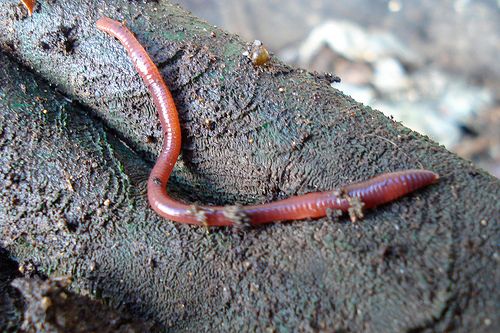Professional Lawn Care Assistance Powered by Lake Hickory Bait for Stunning Results
How Red Wigglers Can Transform Your Composting Experience
The assimilation of red wigglers into composting techniques offers a transformative technique to waste administration and dirt enrichment. These organisms not only expedite the decay procedure however additionally produce nutrient-dense vermicompost that improves dirt health and wellness and fertility. Their adaptability to numerous environments makes them an appropriate choice for both beginner and skilled composters alike. Nonetheless, understanding the details requirements and benefits connected with keeping a flourishing worm populace is essential for optimizing their potential. What methods can one utilize to make certain a successful vermicomposting experience?
Benefits of Red Wigglers
Red wigglers, clinically recognized as Eisenia fetida, are a keystone of reliable composting systems due to their impressive capability to disintegrate raw material effectively. These worms master changing kitchen area scraps, yard waste, and other natural products right into nutrient-rich garden compost, typically referred to as worm spreadings. Lake Hickory Bait. This process not only lowers garbage dump waste but also adds to sustainable gardening techniques
Among the primary advantages of red wigglers is their high recreation rate, allowing them to occupy a composting environment promptly. This fast multiplication boosts decay rates, causing faster compost manufacturing. Furthermore, red wigglers flourish in a varied series of problems, making them adaptable to various composting arrangements.

Establishing Your Worm Container
(Red Wiggler Express)To create an efficient worm container for composting, careful interest must be offered to its layout and environment. A suitable worm bin must be constructed of materials that are sturdy yet allow for needed air movement, such as plastic or wood. The size of the bin can differ, yet a volume of roughly 1 square foot per extra pound of worms is an excellent beginning point.
Guarantee that the container has water drainage holes to avoid water build-up, which can bring about anaerobic conditions harmful to the worms. Furthermore, including air flow openings will help maintain appropriate humidity degrees and oxygen circulation.
Following, it is vital to provide bedding for the worms, which can include shredded newspaper, cardboard, or coconut coir. This bed linen not only uses an environment for the worms yet additionally help in dampness retention.
Position the worm container in a location that maintains a temperature series of 55-77 ° F(13-25 ° C) to optimize worm activity. Avoid positioning the container in straight sunshine or extreme temperature levels. By complying with these standards, you can develop a helpful setting for red wigglers, improving the effectiveness of your composting process.
What to Feed Your Worms

(Hickory NC Worms For Sale)Red wigglers particularly enjoy soft, moist foods like watermelon peels, cucumber peels, and banana peels. It is crucial to stay clear of feeding them citrus fruits, onions, and garlic, as these can be destructive to their wellness. Additionally, prepared foods, dairy products, and meat needs to be strictly avoided, as they can bring about odors and attract parasites.
Giving a constant feeding timetable will assist maintain your worm population flourishing while boosting the total efficiency of your composting initiatives. By recognizing what to feed your worms, you lay the foundation for a successful and sustainable composting experience.
Preserving a Healthy And Balanced Habitat
Creating a prospering composting setting for red wigglers requires attention to their habitat, as it straight affects their wellness and efficiency. The suitable environment should maintain a balanced wetness level, commonly between 60-70%. Excessive moisture can result in anaerobic problems, while not enough dampness might dry out the worms.

The bedding material in the garden compost must be diverse and shredded, see this site integrating materials like cardboard, paper, and coconut coir. This not just gives a comfy atmosphere however also acts as a food source. Lake Hickory Bait. On a regular basis inspecting for smells or indications of insects can help recognize prospective problems before they escalate
Last but not least, preserving a balanced pH degree, preferably in between 6 and 7, makes sure a conducive habitat for red wigglers, cultivating their capacity to process raw material effectively. By addressing these aspects, you can create a lasting and efficient composting community.
Harvesting and Using Compost
Gathering compost from a worm bin is a fulfilling process that transforms natural waste into nutrient-rich product for yards and plants. When the composting cycle is full, commonly after 8-12 weeks, it's time to gather the vermicompost. The very first step entails separating the red wigglers from the completed garden compost. This can be done using techniques such as the "light" approach, where worms are attracted to light and can be scooped far from the leading layers, or by moving the compost away of the container and including fresh bedding to the opposite, motivating the worms to move.
As soon as the worms are removed, the remaining compost can be looked to remove any kind of larger particles or undecomposed material. The end product ought to have a dark, crunchy structure and a positive earthy smell, indicating that it awaits use. This rich garden compost can be used straight to yard beds, mixed into potting soil, or utilized as a top clothing for potted plants. By incorporating vermicompost right into your horticulture practices, you not only enhance soil fertility but also promote healthy and balanced plant development and lasting horticulture approaches.
Final Thought
Including red wigglers right into composting techniques substantially enhances the disintegration process and contributes to the manufacturing of nutrient-rich vermicompost. The resulting worm spreadings improve soil framework, fertility, and microbial task, inevitably promoting healthier plant growth.